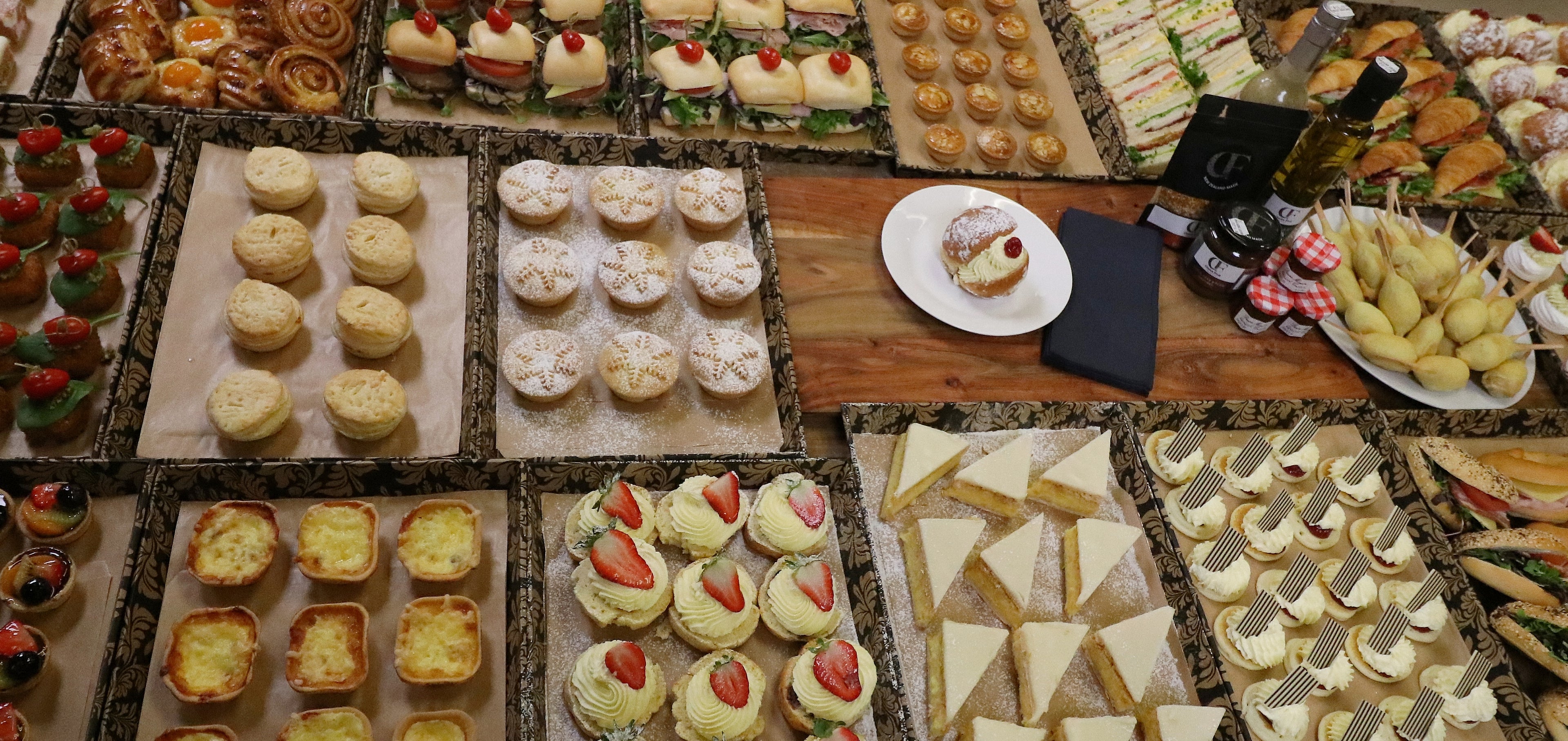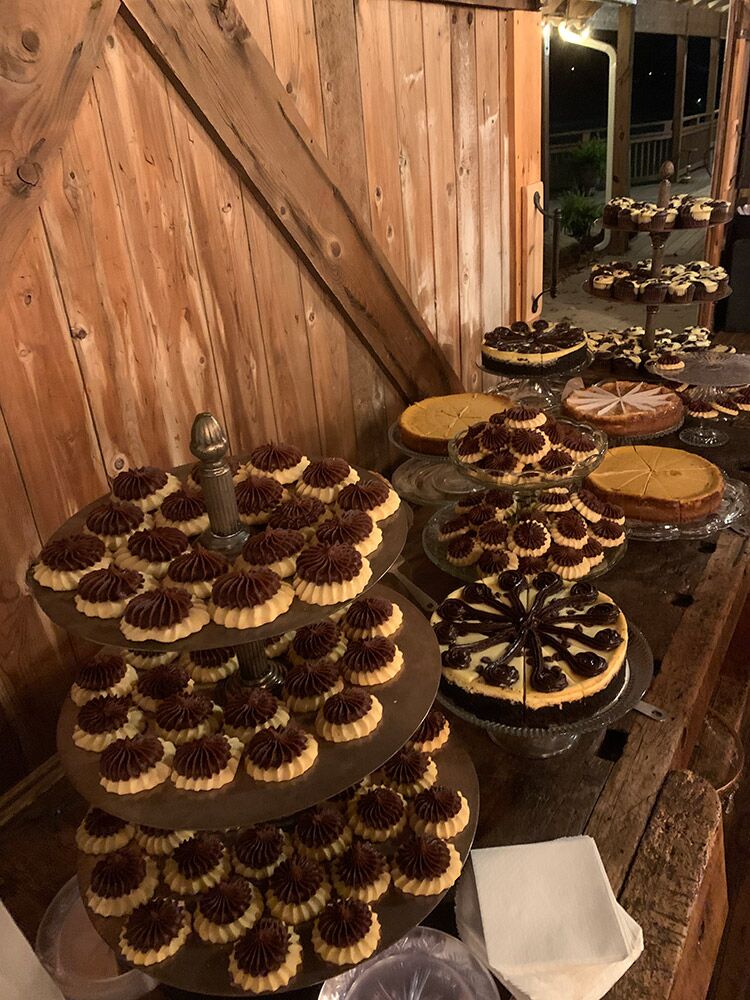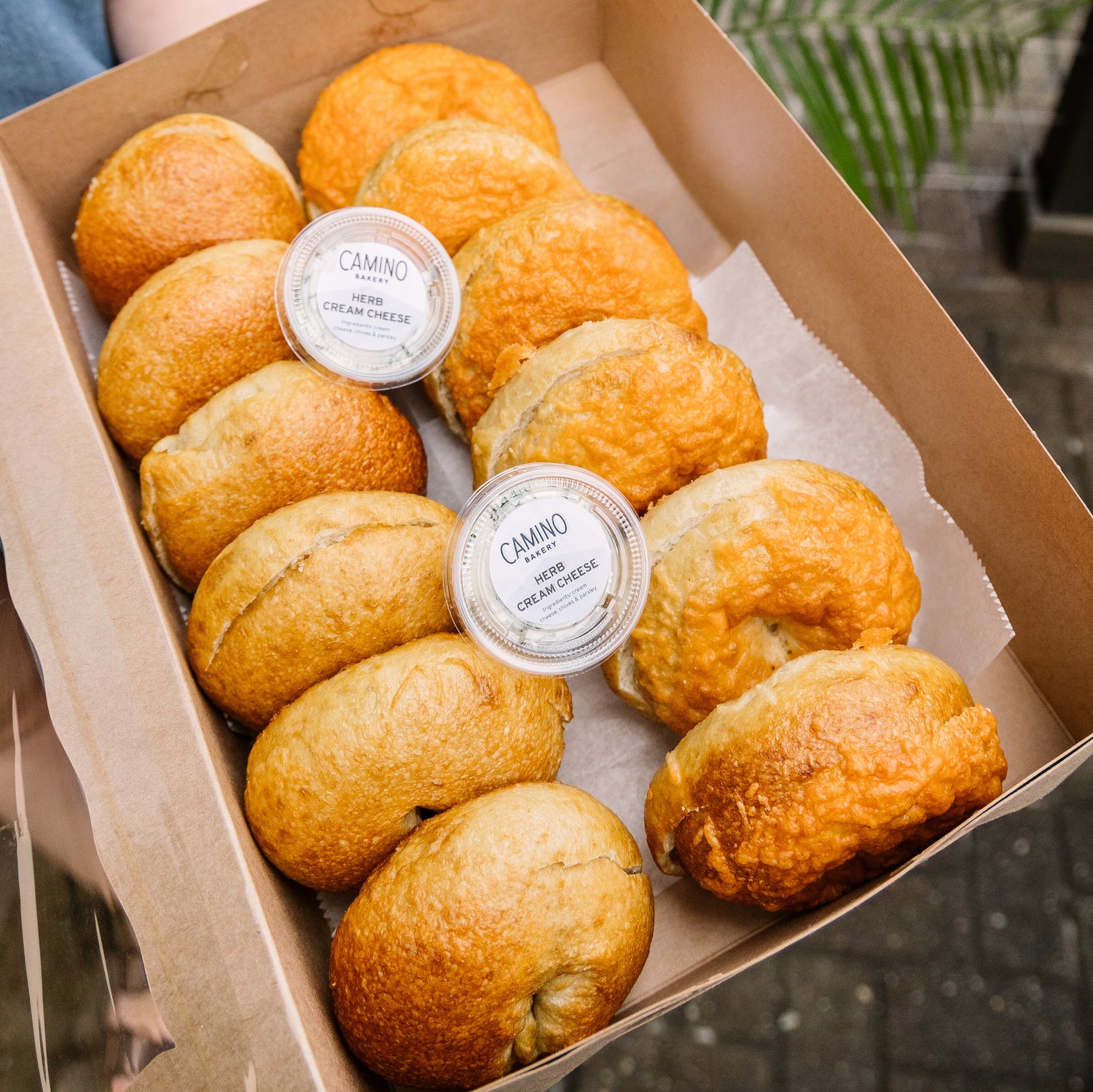Sophisticated Birthday Catering Maddington for a Sophisticated Touch
Sophisticated Birthday Catering Maddington for a Sophisticated Touch
Blog Article
Comprehending the Art of Pastry Shop Products: From Newly Baked Breads to Alluring Pastries and Finger Foods
From the science behind the perfect loaf of bread, where fermentation and gluten development play crucial roles, to the finesse required for creating split pastries, each element exposes a compelling story of craftsmanship. The versatility of finger foods shows exactly how taste and structure can be artfully integrated to engage diverse preference choices.
The Science of Bread Making
At the heart of every loaf of bread exists an interesting interaction of chemistry and biology. The process of bread making starts with the mix of flour, water, yeast, and salt-- each ingredient playing a critical role in the last product.
Yeast, a living organism, ferments the sugars present in the flour, creating carbon dioxide and alcohol at the same time. The co2 gas develops bubbles in the dough, triggering it to increase and develop a light appearance. The temperature level and humidity throughout fermentation dramatically affect yeast task and, subsequently, the bread's taste and appearance.

Learning Pastry Techniques
Just how can one achieve the fragile balance of appearance and flavor that specifies phenomenal pastry? Mastering pastry strategies needs a deep understanding of components, approaches, and the science behind them. Fundamental to this craft is the choice of high-grade active ingredients-- flour, butter, sugar, and eggs-- each playing a crucial role in the end product's flavor and appearance.
The method of lamination, which entails folding layers of dough and butter, creates the wanted flakiness in pastries like croissants and smoke pastry. Precision in temperature is important, as butter should remain chilly to ensure optimal layers. Appropriate mixing techniques, such as the creaming method for cakes, make sure even consolidation of air and fat, resulting in a light and airy crumb.
Additionally, preserving the best humidity degrees throughout baking can significantly affect the outcome, making certain that breads climb appropriately and accomplish that golden-brown coating. Lastly, the art of bread additionally demands persistence and practice; each attempt enhances one's skill and understanding of the elaborate equilibrium needed to produce alluring breads that delight the detects. Proficiency in these methods inevitably distinguishes a knowledgeable bread chef from an amateur.
Types of Finger Foods
The globe of culinary thrills prolongs past breads to encompass a large variety of finger foods, which are celebrated for their convenience and adaptability. These bite-sized deals with are perfect for social gatherings, using a selection of tastes and appearances that satisfy diverse palates.

On the sweeter side, miniature tarts and bite-sized cupcakes supply a fascinating coating to any kind of dish, appealing to those with a craving for sweets. Furthermore, cheese and charcuterie boards act as a sophisticated selection, allowing guests to personalize their bites with a selection of meats, fruits, cheeses, and nuts.
Taste Profiles in Baking
Cooking is an elaborate dancing of flavor profiles that integrates pleasant, savory, and umami notes to create an unified experience for the taste buds. Comprehending these accounts is crucial for bakers looking for to raise their creations.
Sweetness frequently works as the foundation in baked products, with sugars, fruits, and all-natural sugar enhancing taste depth. Active ingredients such as delicious chocolate and caramel present intricate sweet notes that can either control or complement other flavors. Alternatively, full-flavored aspects, usually located in breads and breads, provide equilibrium and comparison. Active ingredients like herbs, spices, and cheeses can change an easy dough right into a diverse taste experience.
Umami, frequently forgotten in cooking, plays a substantial role in improving flavors. Ingredients such as aged cheeses, fermented products, and even specific nuts add to a tasty deepness that enhances general preference.
Additionally, the interaction of acidity from active ingredients like buttermilk or citrus enthusiasm can brighten flavors, using a rejuvenating counterpoint to sweet taste. By attentively incorporating these taste accounts, bakers can craft products that resonate with varied palates, producing a memorable culinary experience. Inevitably, grasping taste accounts is key to innovation in the globe of baking.
Essential Cooking Tools and Components
Recognizing taste accounts in cooking collections the stage for selecting the right devices and ingredients that assist in the creation of exceptional baked goods. The foundation of effective baking hinge on having vital devices at hand. Trick items consist of blending bowls, gauging cups, and spoons for accuracy, in addition to a durable stand mixer or hand mixer for easy mixing. A trustworthy collection of baking frying pans-- such as sheet frying pans, loaf pans, and cake frying pans-- is crucial for attaining wanted structures and forms.
Flour serves as the backbone of the majority of recipes; picking the best type-- be it all-purpose, bread, or pastry flour-- can substantially impact the end result. Baking powder and cooking soft drink are essential for producing lift in pastries and cakes.
In addition, including taste boosters like vanilla remove, flavors, and citrus anonymous passion can elevate your developments. Resources By guaranteeing accessibility to these essential tools and active ingredients, bakers can with confidence get started on their culinary trip, crafting a diverse selection of delightful baked items.
Final Thought
Proficiency in bread making, pastry prep work, and finger food presentation discloses the elaborate connections between procedures and components. Finger Food Catering Maddington. Checking out diverse flavor profiles enhances the baking experience, while important tools and ingredients give the foundation for success.
How can one achieve the fragile balance of structure and flavor that defines extraordinary pastry? Essential to this craft is the choice of high-quality components-- flour, butter, sugar, and eggs-- each playing a critical role in the final item's flavor and structure.

Comprehending taste accounts in cooking collections the stage for picking the right tools and ingredients that assist in the development of phenomenal baked products. Checking out varied taste profiles enhances the baking experience, while important devices and components offer the foundation for success.
Report this page